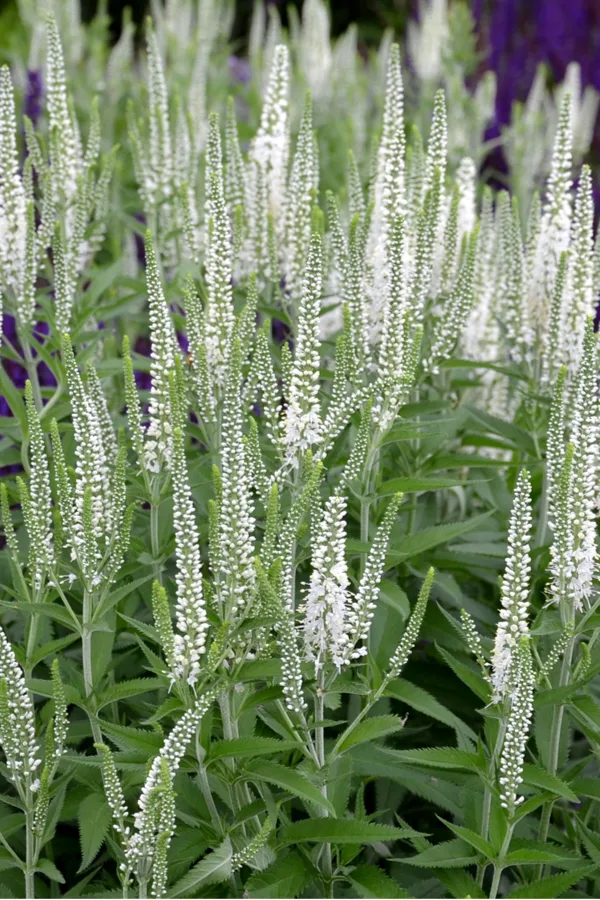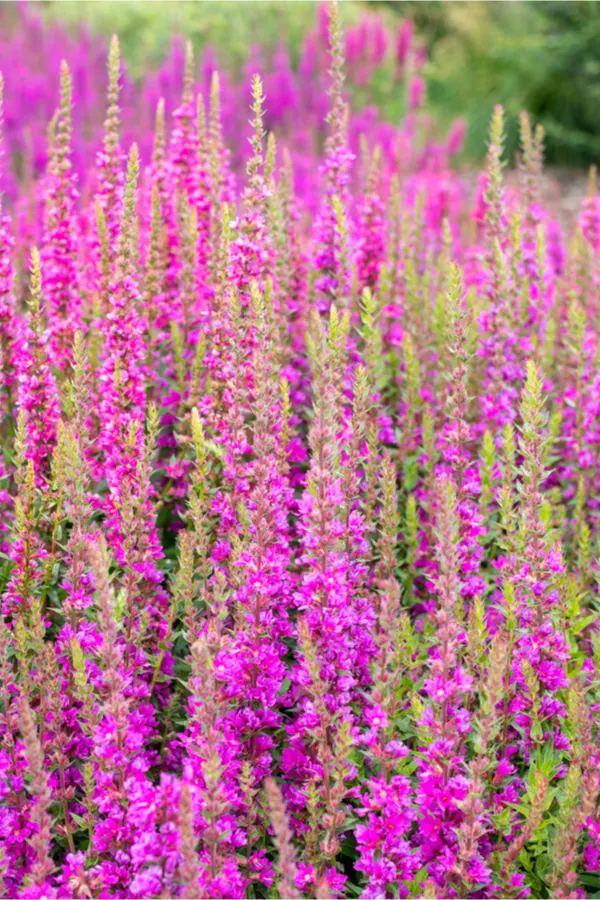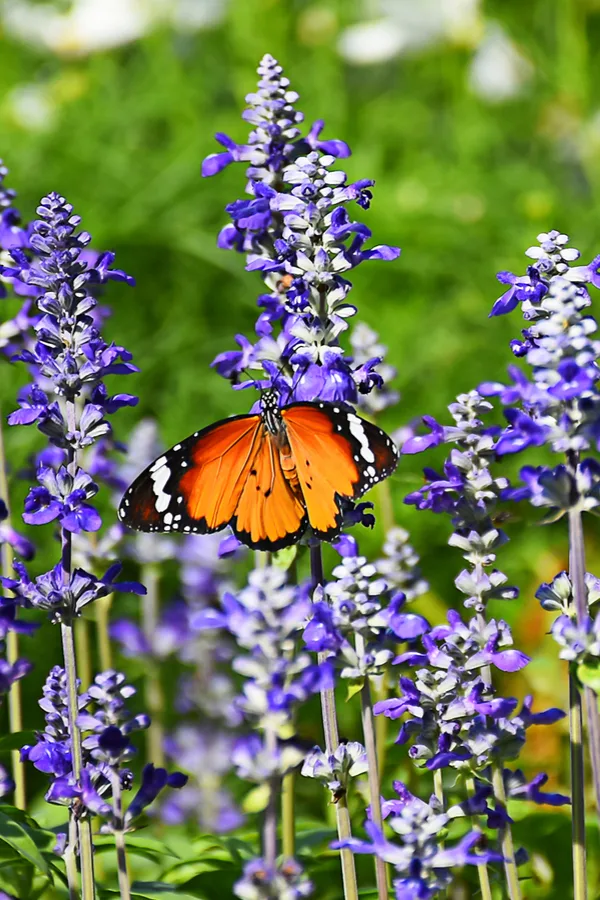Growing salvia is a great way to add long lasting color and blooms to your landscape. And all without the worry of attracting deer, rabbits or other pests that often ruin flowerbeds with their hungry appetites.
Salvia’s foliage is actually offensive to many animals including deer. As a fellow member of the mint family, it’s distinct and intense odor serves well to keep pests away.
But salvia has many other great qualities that make it the perfect plant for the landscape. Like it’s ability to grow well in nearly any soil condition. And, the fact that is holds up incredibly well to the hot, humid and dry conditions summer often brings.

But best of all, the intense blooms of salvia can really bring a flowerbed to life. Blooms that in addition to adding gorgeous mid-summer color, also serve as a huge attraction for bees, butterflies and other important pollinators.
Growing Salvia – The Perennial / Annual Debate
So you might be wondering if salvia is a perennial or annual plant. And the best answer to that question is a little of both.
Although grown in most climates as an annual, salvia can be winter hardy in more temperate zones. In fact, most salvia varieties in growing zones 7 through 10 are considered true perennials.
But that doesn’t mean salvia won’t come back in the more cooler zones of 4 through 7. They just do so in a different way.
Well known as a prolific re-seeder, salvia actually comes back more often than not in cooler zones without replanting. And because of that, many are confused as to call it an annual or perennial.

One thing is for sure, perennial, annual or whatever you would like to call it, salvia brings all kinds of color to the landscape! And with varieties that bloom and flower in blue, pink, white, red, purple and even yellow, there is a color for everyone.
Here is a look at the ins and outs of how to plant, grow and maintain salvia. We have also included a few great varieties to try out in your flowerbeds this year at the end of the article.
How To Plant, Grow And Maintain Perennial Salvia
Location
Salvia loves sunlight! It should be planted in a location that receives at least 6 to 8 hours of full sun each day. Although it can survive in shadier areas, the bloom sets will be limited without adequate sunlight.
Salvia performs well in nearly any soil type as long as its roots are not growing in overly moist conditions. Avoid wet, low-lying locations when planting, along with any location where the soil drains poorly.
Planting
Salvia is easily grown from seed, but it’s important to sow seeds after any threat of frost or freeze has passed. For best results, allow the soil temperature to warm to at least 60 to 65 degrees before planting.
Waiting for warmth is a big key to success. Planting seeds too early in the growing season results in fewer plants that germinate, and a much slower growth rate.

To speed along the process, you can plant seeds indoors 6 to 8 weeks prior to planting outdoors. This helps plants get an early jump on the growing season. It also means the plants will come into full bloom much sooner during the summer months.
Whether planting seeds or transplants, amend the soil prior to planting with plenty of compost. Compost not only contains key nutrients, but also helps provide increased drainage in the soil for salvia. (See: How To Create The Perfect Compost Pile)
In Season Care – Growing Salvia
Salvia is actually one of the easiest plant of all in the landscape to maintain. Beyond adding in compost to the soil at planting time, it requires little watering or maintenance once planted.
If plants are lagging a bit in blooms, you can use a apply a light dose of all purpose fertilizer to give them a quick boost. Be careful not to over-fertilize the plants. Too much will result in plants with more foliage than blooms.
And speaking of those blooms, the best way to ensure a constant cycle of flowers is to practice deadheading the plants regularly. As bloom begin to fade, cut the bloom stem back to encourage new blooms to come on. Salvia is known as a cut and come again plant. Meaning, if you keep cutting back the blooms, more will keep coming on.
Late Season Care – Growing Salvia
As the growing season heads into late fall, allow some of the flowers to go to seed. This will help “plant” next year’s crop as the seed heads drop off and into the soil below. As mentioned above, salvia is one of the best re-seeding plants around, and this simply helps the process.

If you live in a more temperate locations where the plants are a considered a perennial (zones 7 through 10), you can simply cut back salvia to within a few inches of the ground at season’s end. Plants can be divided and transplanted every 3 to 5 years as a perennial to keep them healthy and viable.
Top Varieties of Salvia To Grow
There are a whole plethora of salvia varieties to choose from. One of the most beautiful and interesting varieties to grow is Strata Salvia. The plants produce bi-colored blue and white blooms that extend up to nearly 2′ at the top of the plant. The Strata variety is also extremely pest and disease resistant, and holds up well in hot, humid environments.
Another great choice is Evolution Violet. This stunning variety lights up the landscape with intense purple blooms that appear on 6 to 8″ long spikes. With an overall plant height of around 2′, it is perfect for adding tall color to beds.
Even better, this variety is extremely tolerant of heat and drought, and will stand up in the hottest, sunniest locations of your landscape.Hardy in zones 8 through 10, it re-seeds easily in cooler climates to come back again and again. Here is to growing salvia in your landscape this year!
This Is My Garden is a website dedicated to spreading the love and knowledge of gardening around the world. We publish two new garden articles each week. This article may contain affiliate links.

